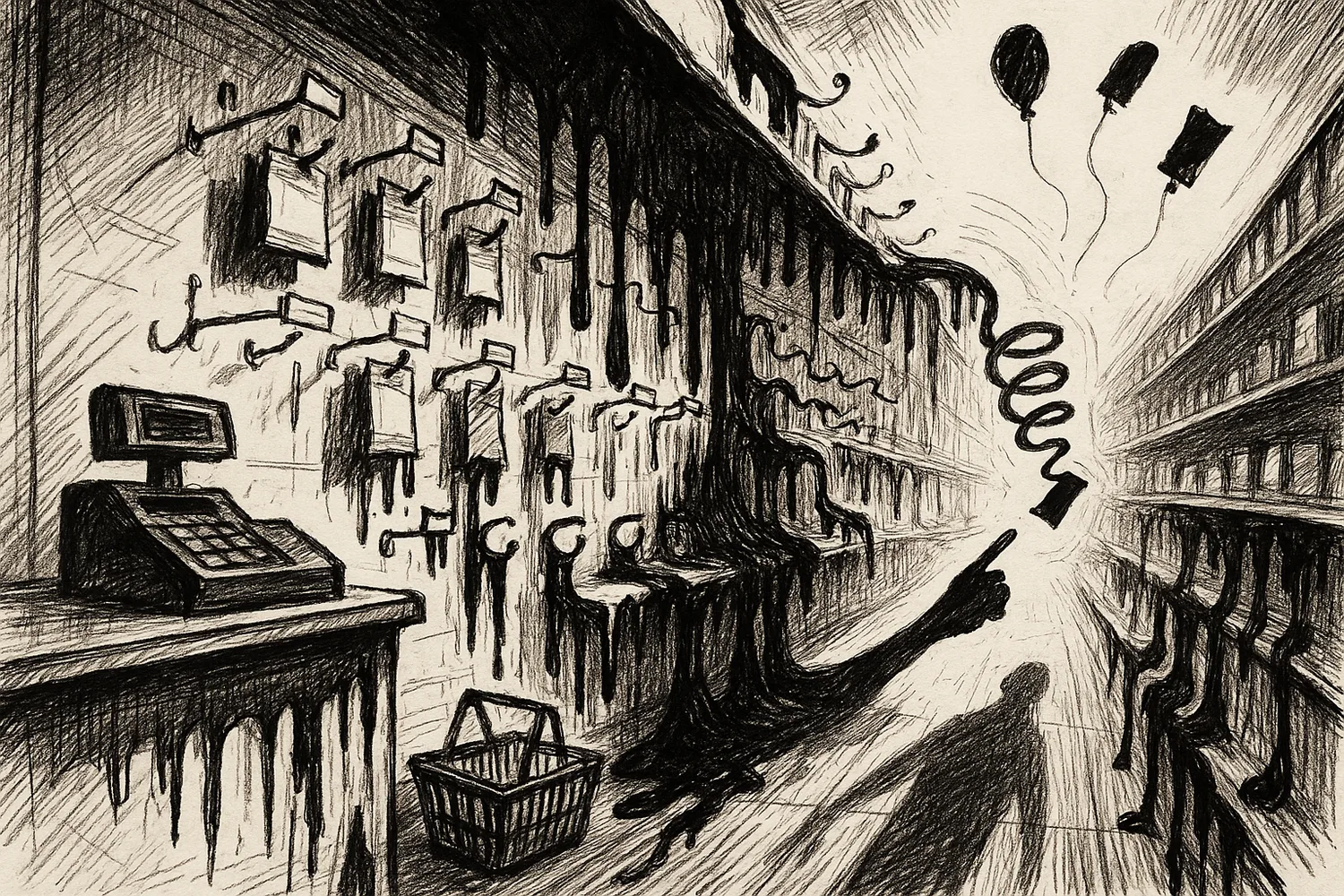TLDR: Data through mid-2025 shows GLP-1 households cut snack spending up to 11%, convenience-food volume dips 1–3%, and Walmart and CPG execs cite smaller, healthier baskets—correlation not causation, but planograms are already pivoting to better-for-you grab-and-go.
Picture the checkout lane at any gas station convenience store: hand-basket queued, eyes drift right, chili-lime chips glowing under LEDs—thirty seconds later two bags hit the belt. This micro-transaction is the high-margin heartbeat of impulse retail. But what happens when millions of shoppers stop feeling that magnetic pull?
An appetite-dampening drug class designed for diabetes management is scrambling the impulse playbook while flying under the industry radar. With adoption reaching roughly 11% of U.S. adults by 2025, GLP-1 medicines suppress hunger by mimicking a satiety hormone that signals the brain to stop eating. The same mechanism dampens the dopamine fireworks that make candy bars irresistible at 6:30 p.m. Fewer unplanned calories, slower grocery velocity, and a measurable squeeze on categories built for split-second cravings.
The Demand Signal—What's Actually Moving (and What Isn't)
A December 2024 Cornell University study with Numerator tracked real purchase data from 2,623 households after a member started a GLP-1 drug. Within six months, grocery spending dropped 5.3% overall; higher-income adopters cut 8.2%. The deepest declines hit impulse stalwarts: savory snacks plunged 10.1%, sweet bakery and cookies fell 6.7% to 11.1%. Soft drinks and frozen desserts slid nearly as far. Food-away-from-home budgets shrank close to 7%.
Convenience operators watched trips surge 34% year-over-year—people still need gas and TP—yet food sales sagged between 1.2% and 2.9%, according to NACS data through mid-2025.
Retail giants confirm the shift. Walmart noted GLP-1 users' baskets shrank about 6% within six months, "pressuring grocery margin mix," executives said in their Q3 fiscal 2025 call. PepsiCo’s April 2025 update: CEO Ramon Laguarta flagged users gravitating toward protein, fiber, and hydration while cutting indulgent SKUs. R&D dollars now chase smaller packs and better-for-you innovation to offset volume losses. Mondelez models the long-term drag at 1–1.5% of snack volume over a decade—modest until you realize 30% of confectionery profit rides on spur-of-the-moment buys.
The Mechanism—GLP-1 Versus the Dopamine Economy
Impulse retail runs on anticipatory reward: bright colors at eye level, frictionless pricing ($1.99, two-for-$3), pack sizes that prime a dopamine bump before the first bite. GLP-1 drugs short-circuit that loop via receptors in the brain's reward center, muting cravings for high-fat, high-sugar foods. Users still enjoy salty, sweet, or fizzy—three bites or two sips just feel like enough now. The emotional payoff per impulse dollar drops, and the odds an endcap converts a passerby fall correspondingly.
Inside the Aisle—Planograms, Pack Sizes, and a Better-For-You Reshuffle
Merchandisers aren't panicking; they're rotating shelves. 2025 resets show chain-wide nudges toward protein bars, nut packs, zero-sugar beverages, and gut-friendly yogurt cups at eye level. Checkout displays shrink from 68 to 54 items as retailers trim redundant candy SKUs to make room for collagen water, air-puffed cheese crisps, and single-serve tuna salads. Price-pack architecture favors 100-calorie pouches and mini-can multipacks—offering license to indulge without caloric overrun.
Suppliers have noticed. PepsiCo is expanding fiber-fortified offerings and testing beverage-plus-protein hybrids. Frito-Lay R&D teams explore lower-sodium seasonings that preserve crunch after a 20% salt cut. Confectioners relaunch 80-calorie "thins" lines next to shelf-talkers touting portion control, betting GLP-1 shoppers crave a taste hit—just a nibble.
Confounders, Time Horizons, and How Not to Overclaim
Inflation fatigue, SNAP recalibration, a secular wellness swing, and new better-for-you competition all blur the clean line between GLP-1 uptake and checkout slumps. About 60% of users discontinue within six months, often restarting later, which introduces cyclical volatility. Effect sizes weaken after the first half-year, and many categories plateau rather than crater. The aggregate hit equals roughly 1–2% food-and-beverage volume drag—meaningful for chips, modest for bread and milk.
The Playbook—What Retailers and Brands Should Test Now
- Elevate better-for-you at impulse touchpoints: Rotate protein-forward SKUs to eye level and track attach-rate lifts with A/B testing.
- Shrink the splurge: Introduce micro-portion packs (100–130 calories) to satisfy hedonic nibbles without basket bloat.
- Bundle by mission: Pair hydration sticks with single-serve jerky; market to post-workout or mid-shift resets, not "diet" consumers.
- Measure smart: Correlate zip-level prescription density to sales (anonymized) and watch micro-dayparts—late-night candy often slides first.
- Avoid medical language: Focus on "feel-full-longer" or "protein-powered"; never imply cure or requirement for drug users.
The Reengineering of Impulse
GLP-1 adoption isn't killing impulse buys—it's filtering the reward pool slowly, unevenly, but with real bite. Checkout lanes engineered for dopamine fireworks now face shoppers whose cravings arrive muted. The winners aren't abandoning margin; they're rebuilding the maze for lower-craving guests without spoiling everyone else's treat. Watch next year's NACS State of the Industry report. If protein bars top "highest margin per facing," you'll know the drugs didn't just shrink waistlines—they nudged an entire merchandising model one protein bar at a time.
What's changing in your checkout aisle? Send results—anonymized data welcome—and we'll revisit the vending story next.

